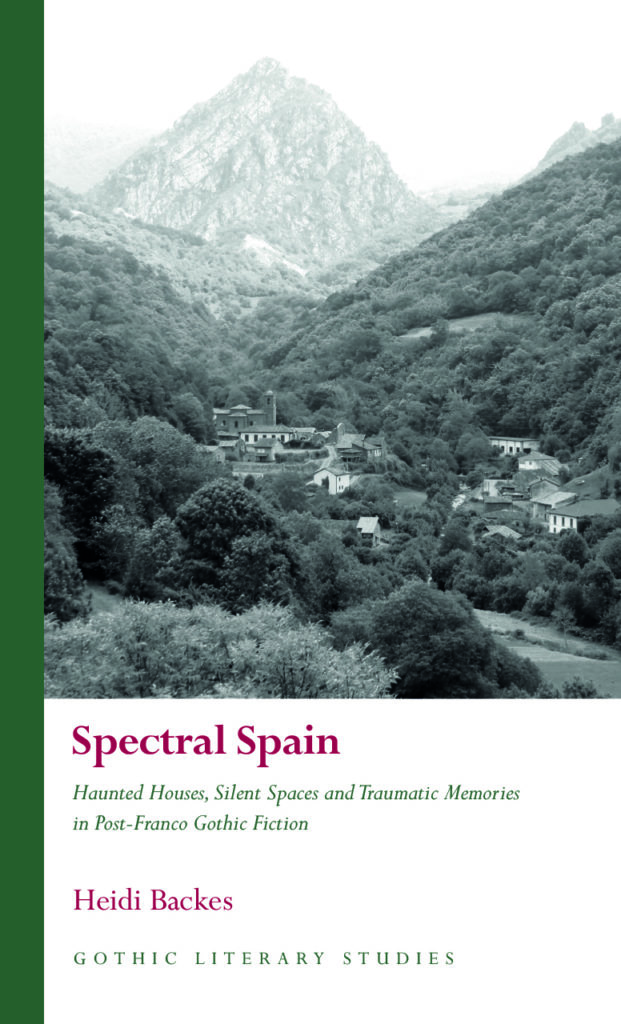
Heidi Backes introduces her monograph Spectral Spain: Haunted Houses, Silent Spaces and Traumatic Memories in Post-Franco Gothic Fiction.
In late April 2019, I was scrolling through my Twitter feed and came upon a post by Spain’s far-right party, Vox: it was the famous Lord of the Rings scene of Aragorn facing the Mordor Orcs, only superimposed on Aragorn was the Spanish flag with ‘Vox’ written below it, and over the line of Orcs was a series of logos representing left-wing groups and ideologies ranging from feminism, anarchy and communism, to various Spanish news organisations, a rainbow-coloured ghost (whom the LGBTQ+ community in Spain immediately adopted as ‘Gaysper’, soon a popular feature on t-shirts in Spanish shops that summer), and the flag of the Second Republic – the liberal government prior to the Civil War and Francisco Franco’s dictatorship. It was election season, and Vox was appealing directly to the nationalist base that exists throughout Spain. This photo, accompanied with the text ‘¡Que comience la batalla!’ (‘Let the battle begin!’), was not just a call to the polls; it was also a purposeful invocation of the past and a willful return to Francoist rhetoric that defined much of Spain’s turbulent twentieth century.
Seeing that post and reading the comments below it, I was struck by how alive the past suddenly felt. Of course, as a Gothic literary scholar, the concept of the past cycling through the present was not at all new to me, but somehow this seemed different: more real, more ominous. As an American living in southern Missouri, I was also experiencing, in real time, the pervasiveness of nostalgia during a presidency that capitalized on the fear of difference. As I watched the election play out in Spain over the following month, and as my own state and federal representatives continued to call for a return to the traditions of the past (and as Vox’s president, Santiago Abascal, copied many of the slogans and tactics of Donald Trump’s MAGA movement), a question came to me: how might contemporary Spanish Gothic authors have portrayed the spectral presence of the dictatorial past, and – if indeed they had – what could we learn from their rendering of the ghostly forms of memory?
Over the next year and a half, I began to search for novels written by Spanish Gothic authors who use haunting as a trope to comment on the experience unique to twentieth-century Spain: living under a fascist dictatorship for nearly forty years, and then transitioning to a democracy that was founded on a law that forbade criticism of the dictatorship and guaranteed amnesty to those who committed crimes under Franco. What I found was a range of novels – written primarily by women – that chronicle the lived experience from the Civil War era through the post-Franco Transition, employing Gothic motifs and excesses as a way to comment on the oppressive nature of life under Franco and their disillusionment with the new democratic structure. These authors, many of whose works have not been translated into English and are thus relatively unknown outside of Spain, are part of a broader ‘Memory Boom’ literary era in the 1990s and early 2000s that reflects on the recent past and problematizes the concept of democracy without historical memory. My book examines these narratives and highlights the Gothic as a prime literary mode for the recovery of the voices that were silenced – rendered ghostly – by Spanish fascism, in the end presenting an urgent appeal to all of us who see the possible return of past horrors in the not-so-distant future.
Dr Heidi Backes is an Associate Professor of Spanish at Missouri State University, where she specialises in contemporary Spanish fiction, with her latest research focusing on the neo-Gothic movement in Spain.


